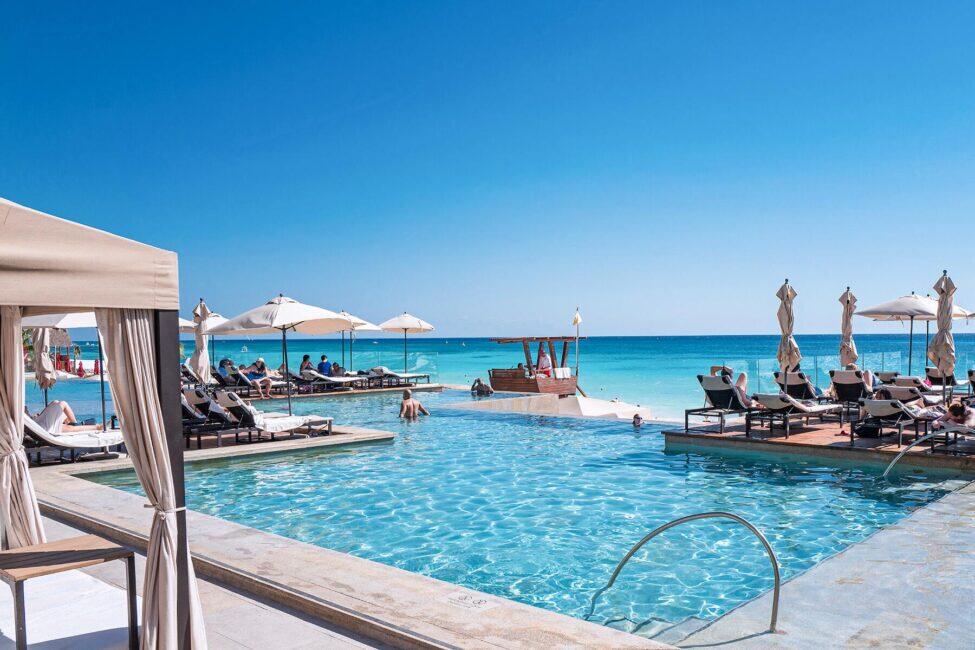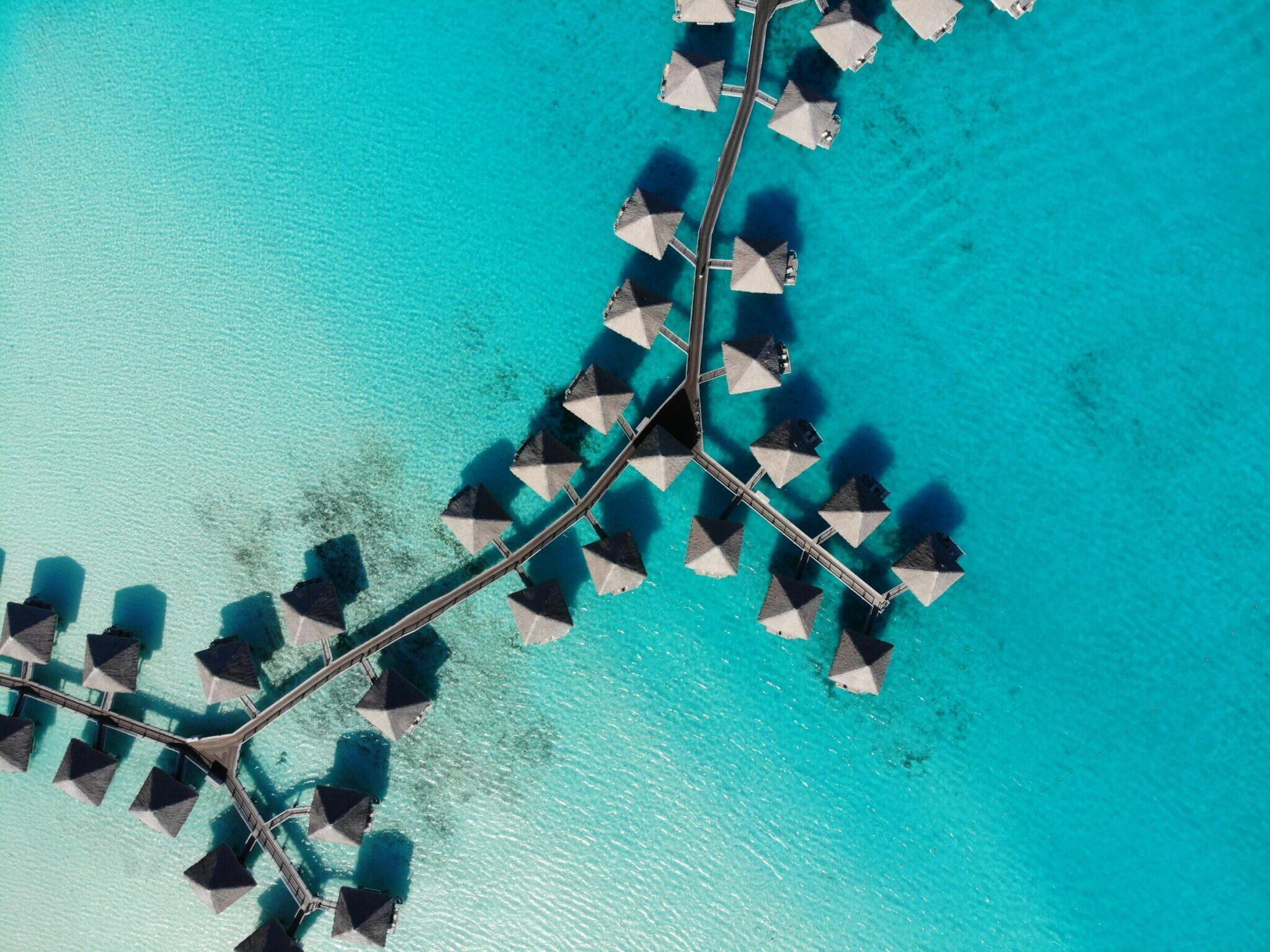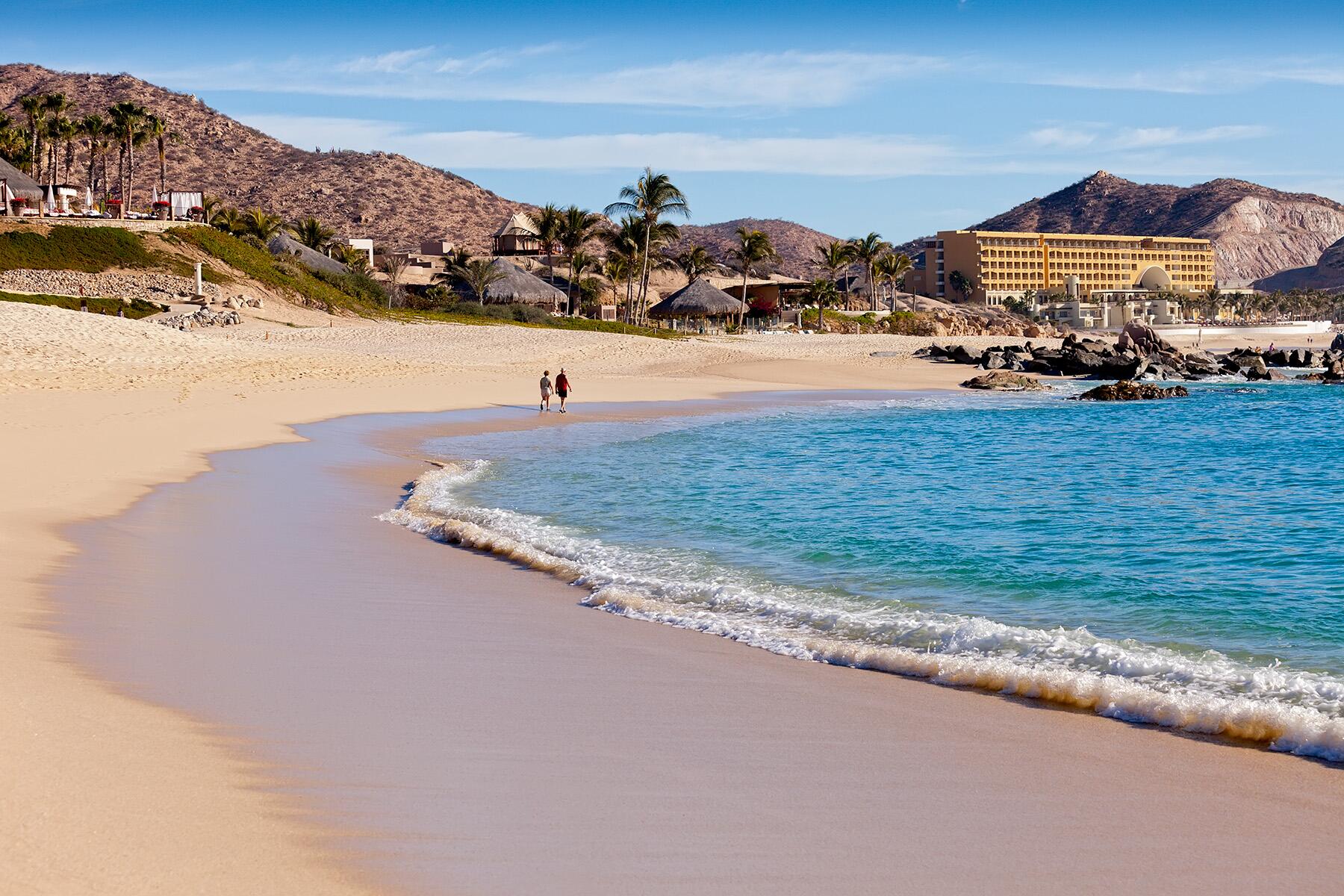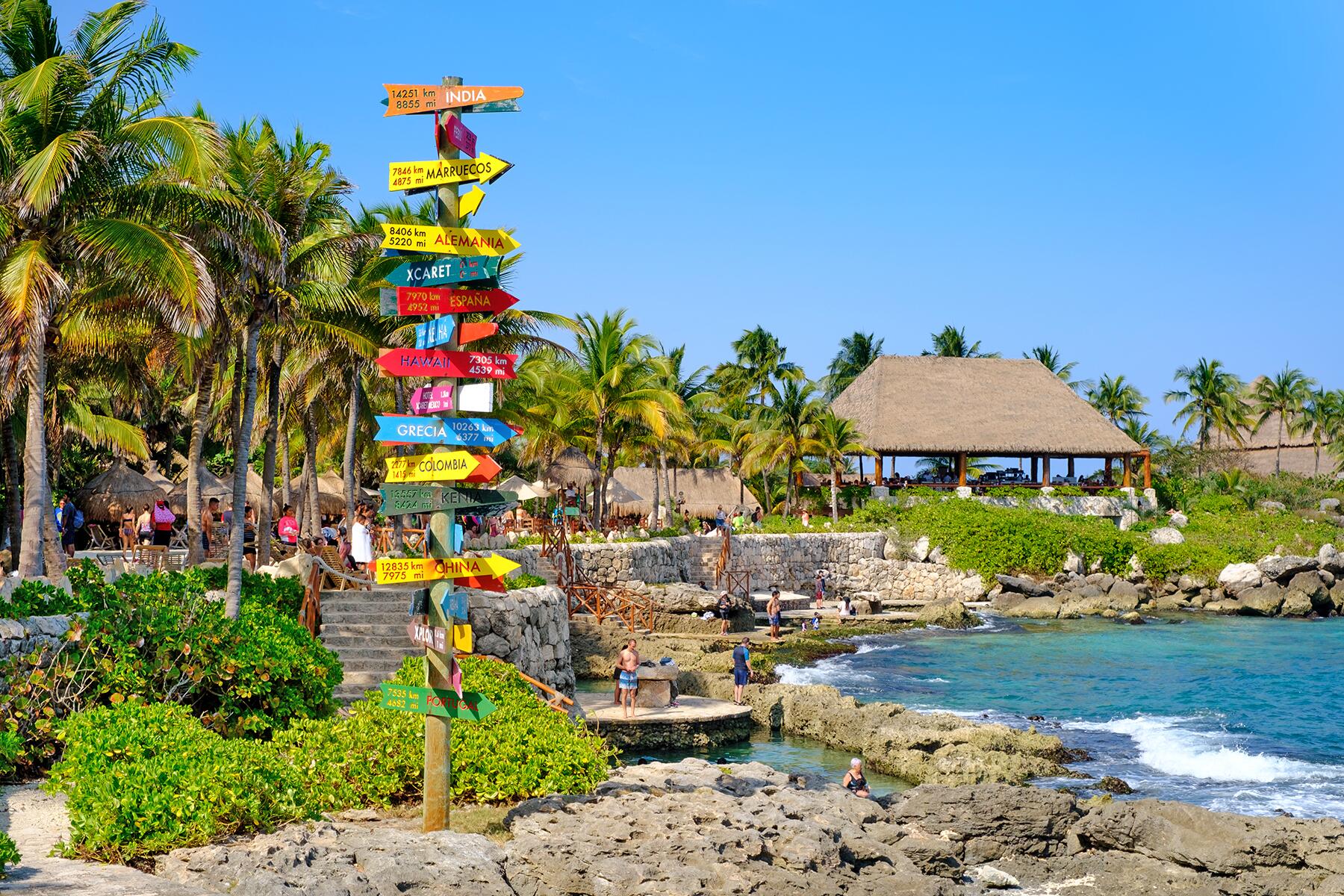Take your pick between jungle-clad cenotes, blissed-out beaches, and open-air Mayan museums.
Arguably one of the most inviting regions in Mexico, Riviera Maya is a collection of beach locales, each boasting an individual history, character, and allure. It stretches southward from Cancún, beginning at Puerto Morelos and concluding at the Sian Ka’an Biosphere. Notably, it does not include Cancún, the Yucatán Peninsula’s busiest coastal city.
Riviera Maya and Mexican Caribbean are often used interchangeably, but the latter is the entire stretch of coastline that includes Holbox, Cancún, and Grand Costa Maya (Mahahual, Bacalar, and Chetumal) as well as Riviera Maya. The “Riviera Maya” brand was established in 1997 and has since propelled the area into a ground zero for travelers craving a mix of adventure, relaxation, and cultural exploration.
At your disposal are two national parks, seven Blue Flag-certified beaches, dozens of sky-high pools, 86 stunning miles of shoreline, hundreds of caves, and perennially sunny escapades plowing waters with thousands of whales that migrate there during the winter months.
Recommended Fodor’s Video
Further adding to the appeal, the region is well connected. There’s a frequent flurry of flights to and from Cancún International Airport (CUN), Cozumel International Airport (CZM), and Chetumal International Airport (CTM) along with the newly opened Felipe Carrillo Puerto International Airport or Tulum Airport (TQO), which was inaugurated in December 2023. The launch of the sprawling 966-mile Tren Maya railway that same month is set to boost accessibility even further.
From north to south, here are the towns and areas in Riviera Maya to add to your little black book of splendid Mexican beach destinations.

Puerto Morelos: Where It All Begins
Puerto Morelos tends to hit the right notes for overtired city dwellers who want to take things seriously easy while on vacation. It clings onto its sleepy fishing village cred, and its history is deeply tied to the sea, as evidenced by the iconic leaning lighthouse, a survivor of Hurricane Beulah in 1967. The beaches in Puerto Morelos—particularly the Blue Flag-certified Ventana al Mar—promise wide, uncrowded spaces that are perfect for relaxation, wriggling your toes in the sand while gazing at gloriously golden sunsets, or for water sports like windsurfing, sailing, and kayaking.
The National Reef Park of Puerto Morelos is part of the world’s second-largest reef barrier and a snorkeling and diving haven just 500 meters off the shore. You may expect a profusion of marine species ranging from French grunts and eagle rays to triggerfish and sergeant major.
For the more terrestrial adventurers, the Ruta de los Cenotes is not to be missed. Cenotes are natural sinkholes filled with freshwater, gateways to an underground world of stalactites and stalagmites. There are over 2,500 of them in Riviera Maya, and the Ruta de los Cenotes has a throng perfectly lined up along one road. Check out Cenote Siete Bocas, Cenote Verde Lucero, or Cenote Las Mojarras, the largest in the area.

Mayakoba: The Eco-Centric Luxury Hideaway
Just north of Playa del Carmen, Mayakoba is a plush residence and resort complex that’s celebrated for its commitment to sustainability. The four esteemed hotels here are Fairmont Mayakoba, Banyan Tree Mayakoba, Andaz Mayakoba Resort Riviera Maya, and Rosewood Mayakoba, where you can rest in dedicated wellness suites spread over two floors and a lunar-aligned aromatherapy program ensures a thoroughly restful night’s sleep. Rosewood Mayakoba’s crown jewel, Sense, a Rosewood’s Spa, sits on its own private island and offers a soul-stirring assortment of ancient Mayan healing traditions ranging from temazcal sweat lodge ceremonies and shaman consultations.
The lagoons, the mangroves, and the carefully preserved patches of jungle spread over 60 hectares make this gated resort community feel like a finely curated off-the-grid escape. Mayakoba also boasts the Greg Norman-designed El Camaleón Golf Course, where the first-ever PGA Tour outside the US or Canada was hosted.

Playa del Carmen: A Thriving Caribbean City
With the largest population in the region, Playa del Carmen is the heartbeat of Riviera Maya and Fifth Avenue (Quinta Avenida) is its central artery. This five-mile-long pedestrian walkway parallel to the beach has local and international clothing brands, over-the-top eateries, chain cafes, street performers, and places where holiday-goers detox and re-tox in city spas and bars with cranked-up volume.
The nightlife in Playa—as residents refer to it— gives Cancún a run for its money and, in fact, some of the same hellraising establishments can be found here like Mandala, La Vaquita, Señor Frogs, and Coco Bongo. Playa is known to be frenetic and fun with entertainment in the form of decadent cave restaurants, rooftop pools, and beach clubs, but a lesser-known part of its history is its contribution to the global chewing gum industry in the 20th century thanks to the sap collected by chicleros. Visit the region’s most cosmopolitan city to mingle with its mix of sun-loving families, itinerant divers, remote workers, snowbirds, yogis, and spring breakers who co-exist there in harmony.
INSIDER TIPFor a centrally located and all-inclusive resort, check out the five-star Grand Hyatt Playa Del Carmen. This pet-friendly, beach-front resort is within walking distance of the city center and can arrange curated experiences, from local cooking classes to tours along Quinta Avenida. While here, check out their Cenote Spa, which is designed to mimic a natural cenote, complete with foliage hanging above a color-changing pool.

Puerto Aventuras: Laidback Marina Living
Puerto Aventuras, a residential community development located about 20 minutes south of Playa del Carmen along the 307, is a stark contrast to the bustling tourism hotspots nearby. Despite a Spanish name that hints at big adventures at the port, things move at a leisurely pace. It is famed for the lavish houses and condominiums encircling two bustling marinas that are dotted with yachts and fishing boats. The marinas are a focal point for the community and serve as a base for catamaran outings, deep-sea fishing trips, and a selection of quaint restaurants and bars like Restaurant Latitude 20, La Caleta, and Pelican Point.
Accommodation options in Puerto Aventuras range from all-inclusive hotels like Dreams Aventuras Riviera Maya and Hard Rock Hotel Rivera Maya to numerous condo rentals with views of the surrounding Caribbean waters that are as blue as a monarch butterfly.

Akumal: The Tranquil Turtle Town
Akumal is a quaint coastal community named for its oldest residents: the sea turtles. Meaning “Place of the Turtles” in Yucatec Maya, you’ll have the great fortune of swimming beside these majestic creatures just a few paddle strokes from the shore. One minute, you’re scoffing sumptuous fish tacos at the local beachfront institution Lol-Ha, and the next, you’re donning a life jacket and jumping into the water to share the waves with hawksbills, loggerheads, and green sea turtles of all sizes. The seagrass beds in Akumal Bay are a magnet for the turtles, so swimmers are urged to forgo flippers to protect the underwater environment.
Inland, nature takes center stage in Akumal, where you’re granted access to a world of exotic animals, from flamingos and zebras to ostriches and playful titi monkeys, at the Akumal Animal Sanctuary for rescued animals. While in town, don’t miss the chance to monkey around at La Buena Vida, a restaurant with a pool, swings, and a treehouse in which to live out your childhood fantasies.

Tulum: A Bohemian Paradise
Chances are you know someone who has been to Tulum for a pre-wedding bash, spiritual retreat, or full moon party where EDM DJs kept the place thumping late into the night. The beaded-necklace-and-linen-clad crowd in Tulum is a mix of well-heeled North Americans, wellness aficionados, social media stars, and those seeking infusions of culture during their beach getaway. Far from its days as a rustic hippie escape, Tulum is now a destination celebrity, a Mexican “Magic Town,” and the only Mayan city built overlooking the sea. It is divided into three distinct zones: the sea-facing archaeological site, the downtown area that’s known as “El Pueblo,” and the hotel zone where the bulk of Insta-worthy addresses can be found.
Hotels, as well as meals and beverages at the beach clubs, tend to be on the upper side of affordability compared to other Riviera Maya destinations. You can preen on a lounge chair and prepare to part with your pesos at Gitano, Bagatelle, Ziggy’s Beach Club, Vagalume, or Papaya Playa Project, a hotel with a highly-frequented beach club.
Tulum has no shortage of stylish boutique resorts where biophilic design that celebrates the scenic surroundings is the order of the day. La Valise Tulum is one such bolthole where guests can choose from beachfront or jungle suites in two wings—one lodging (the Cenote Master Suite) even has a king-size bed that’s designed to roll out onto the terrace for sun-drenched naps or nights under the stars.
Sian Ka’an Biosphere Reserve: Unbridled Nature Encounters
Just south of Tulum’s ruins lies the Sian Ka’an Biosphere Reserve, Mexico’s largest protected area and a UNESCO World Heritage Site. Spanning over 1.6 million acres, it’s a diverse ecosystem that’s home to tropical forests, wetlands, savannas, and coral reefs, making it a prime spot for eco-tourism. The reserve is rich in wildlife, including jaguars, howler monkeys, and over 345 bird species, and it contains more than 23 Mayan archaeological sites.
Accessible via a coastal road from Tulum, kayaking, paddle boarding, diving, hiking, fishing, and birding are woven into the ebbs and flows of life here. Within Sian Ka’an, which is Yucatec Maya for “where the sky is born,” the fishing village of Punta Allen is the end of the road, literally and figuratively. Electricity supply is intermittent, and there is limited tourist development alongside private homes and fishing lodges that offer a genuine escape from the modern world.



